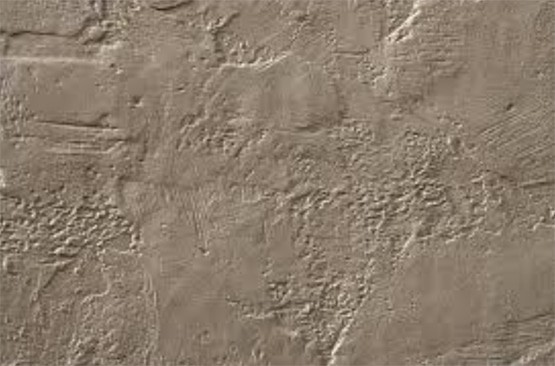Stucco House Finish: Basics, Application, Pros & Cons
Written by Lee Wallender

When most homeowners think of siding, they may think of vinyl, fiber-cement, or plywood.
But there is a form of siding that has been around for centuries that lets you provide a unique, stylish siding for your home.
It is called stucco finish (or stucco siding), and unlike other types of house finishes, it applies equally well over masonry and wood-sheathed homes.
Note: Stucco siding can be used for both residential and commercial applications. It is recommended to hire professional stucco contractors in both instances.
What Is Stucco Finish?
Stucco itself is a cement-type mixture. It is made up of sand, Portland cement, lime, and water. It is really considered a thin finish coat, the outermost layer that is visible and can be painted. But to make stucco work, you need layers below it to provide an adequate base. It is not necessary to mix stucco from raw ingredients; you can buy pre-mixed stucco finish, requiring only the addition of water.
Beautiful But Not Easy
If you are looking for an easy way out, stucco is not it. Stucco does have its advantages over traditional siding materials, but it also has some downsides.
Stucco is typically tinted to add color, rather than painted*. Requires professional installation. Do it yourself application is not recommended. Lasts 50 years or more, but needs proper maintenance. Stucco is considered one of the cheaper types of siding because it is low on expensive materials. Much of the cost is the time-intensive labor. Stucco can be damaged quite easily.
The Layers of Stucco: Over Wood or Masonry
The natural place to install a stucco finish is over concrete masonry. Concrete masonry is stable and less prone to expansion and contraction and other movement that may crack the stucco. While stucco finish can be applied to a wood-sheathed home, additional reinforcement is needed. On concrete masonry, little other than a scratch coat is needed below the stucco finish. A scratch coat is a base layer of cementitious material that is literally scratched horizontally with a comb-like tool.
Wood-sheathed buildings are a different matter. Wood sheathing itself will not provide a proper base for stucco finish. You need to layer it with Tyvek or other waterproof building paper, and then self-furring metal lath. This lath provides the grip for the scratch coat to hang onto. After the scratch coat, apply a brown coat to provide a smooth surface for the subsequent stucco finish.
Recommended thickness for the scratch coat for either masonry or wood-sheathed buildings is 3/8″ minimum.
Stucco Siding Pros and Cons
For decades, stucco was the finish-of-choice for contractors and builders throughout the western U.S. After the 1980s, it fell out of favor. Is stucco ready for its comeback?
Stucco Pros
- Can be textured as well as tinted
- Gives the house a tight seal against weather
- Low-cost compared to other styles of siding**
- Low-cost also interpreted by many homeowners and potential buyers as “sub-standard”***
Stucco Cons
- Not appropriate for every locale. Best suited for southwestern U.S. areas
- Repair of stucco finish is not easy
- Do-it-yourself opportunities with stucco finish are limited
From the editor: This article was written by Lee Wallender and was republished in its entirety from www.thespruce.com. Original article could be read here
*, **, ***NOTE: Some of the opinions of the original writer are not supported by publisher of www.StuccoRepairJacksonvilleFL.com
